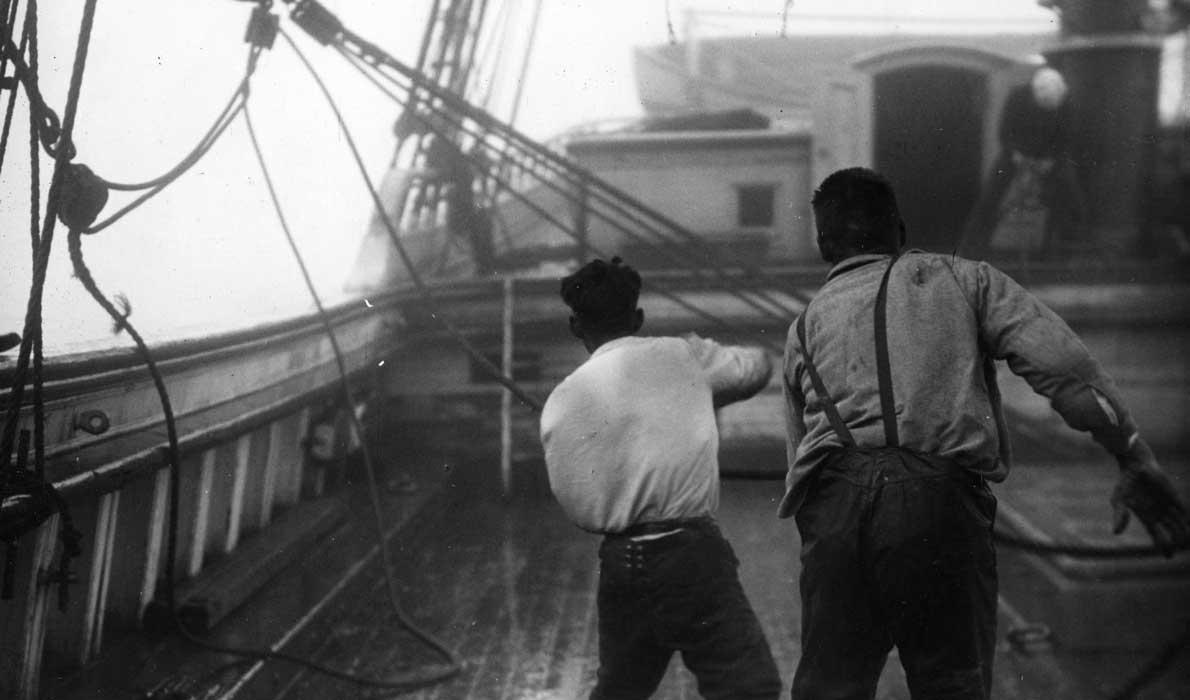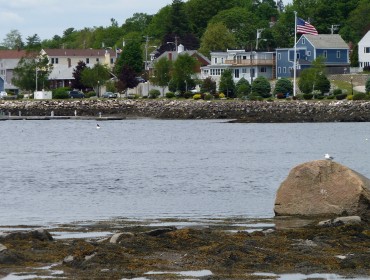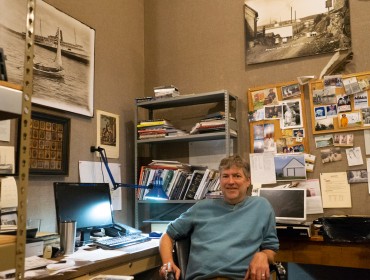Posted June 15, 2015
Last modified June 23, 2015
By Stephanie Bouchard
BATH — Lobstermen, fishermen, sailors and ship captains—those may top the list when you think about who works in the maritime industry. But there are many, many more jobs that make up Maine’s maritime ranks, past and present, and the Maine Maritime Museum celebrates those often forgotten workers in an exhibit that runs now through Nov. 1.
“Making the Best of It: The Spirit and Work Ethic of Maritime People” is a photography exhibit primarily drawn from the museum’s collection, said the exhibit’s curator, Kelly Page, who is the museum’s registrar. She whittled down her top 300 photo picks to 67 for the exhibit.
The earliest photos are from the 1880s and the most recent from 2009 with the bulk of them from the early to mid-20th century. From the dramatic—men balancing precariously on a rope trimming sail in rough seas—to the mundane—the interior of a 1950s Bath-based boat supply shop—the photographs capture the people and the layers of work that powered, and in some cases still power, the maritime industry.
While mostly a photography show, a smattering of artifacts include a hairnet from the Green Island Packing Company; a rubberized canvas diving suit made by Boston’s Morse Diving Equipment and used by a diver at Bath Iron Works; and a colorful hard hat worn by Page herself when she worked in the paint department at BIW in the early 2000s.
The idea behind the exhibit, Page said, is to illustrate the diverse occupations, trades and vocations derived from and related to the waterfront.
“Everyone has an office,” she said, and while those behind-the-scene jobs are usually not “romantic” and often not thought about by most of us, they are still important to making the industry work.
And that is why exhibit attendees will see some of what they expect—sailors aboard wooden sailing ships for instance—but also much of what is unexpected—workers canning sardines; pulp being loaded onto a freighter; a shipyard switchboard operator at her station; an oil contamination cleanup crew; an artist painting a seashore scene on canvas.
The images also illustrate how much Maine’s maritime industry has changed, said Page.
“People aren’t going to sea in the same numbers [as in Maine’s maritime heyday],” she noted, which means many of the jobs depicted in the photographs have been lost or have become niche markets. For instance, wooden shipbuilding used to be equated with working vessels but today wooden boats are mostly for pleasure, she said, and sail makers are few and those that do exist are making sails for recreational yachts, not commercial boats.
“Making the Best of It: The Spirit and Work Ethic of Maritime People” is part of Maine Maritime’s summer exhibit theme of maritime work. An exhibit on ship carving runs through July 6 at the museum, and “Staying the Course: Working Women of Portland’s Waterfront,” an exhibit created in collaboration with the University of Southern Maine’s Osher Map Library, runs Aug. 7 to Sept. 28 at the Portland Public Library.
A number of events related to “Making the Best of It,” including lectures, documentary films and behind-the-scene tours (including a tour of the Maine Responder, an oil spill response vessel) are scheduled throughout the length of the exhibit.
Maine Maritime Museum is at 243 Washington St. in Bath. The museum is open daily from 9:30 a.m. to 5 p.m. Museum admission is $13.50 to $15 for adults, $10 for those under age 17, free for children under age 6. Admission for special events varies by event. Call 443-1316 or go to www.mainemaritimemuseum.org for more information.
Contributed by




